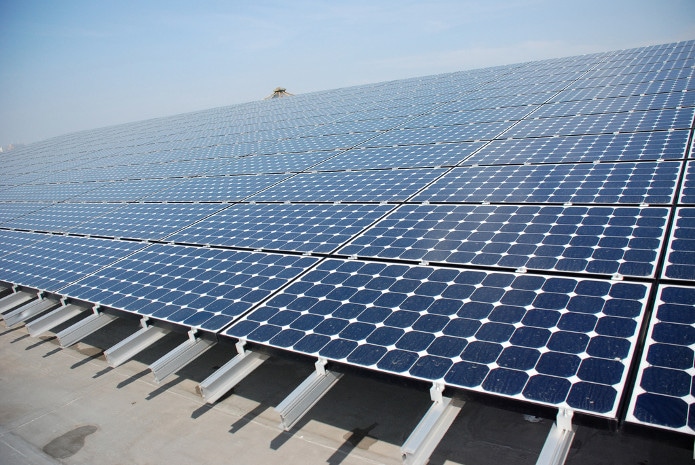The rise of behind-the-meter solar and battery storage is a huge challenge for the distribution grid, which was designed to facilitate the flow of electrons from distant, large generation to dispersed consumers, not the peer-to-peer flow of electricity from multiple agents who act as both producers and consumers.
And while there have been many efforts to try to reform the distribution grid to accommodate the new reality of distributed resources, there have been none in the United States as sophisticated and far-reaching as New York’s Reforming the Energy Vision (REV) process.
But as is the danger with such an ambitious initiative, REV has also been notoriously slow to deliver concrete results. Today the process met a major milestone, with the New York Public Service Commission (NYPSC) approving the first phase of the Value of Distributed Energy Resources order, which sets a formula to compensate clean energy generation.
The formula
As previously planned, under REV new commercial, industrial, non-profit and government solar installations will be paid according to a formula based on a value stack, composed as follows:
- the locational marginal value of energy (calculated hourly) +
- a capacity payment +
- an environmental value, based on the price of renewable energy credits from the latest NYSERDA procurement or the social cost of carbon, whichever is higher
Vote Solar, which applauded the ruling as major progress, notes that this sort of valuation for distributed electricity generation based on hourly, node-based prices is a first for the United States.
“To my knowledge this is the first valuation that is really dynamic and tied to the market,” Vote Solar Northeast Regional Director Sean Garren told pv magazine. “Both Austin Energy and Minnesota, those are more fixed snapshots of the value, whereas this is really a dynamic and changing value.”
“They are both trying to get to the same goal, which is what is the value of the electrons and how do we compensate people fairly for that.”
Additionally, residential customers who subscribe to community solar projects will be paid with a market transition credit, which is supposed to make up the difference between retail rate compensation under net metering and the new value stack, but will step down in three tranches.
Commercial and industrial (C&I) community solar customers will not get this market transition credit, but they will receive an additional credit based on the value of solar to the distribution system.
This means that for a given community solar plant, payment will be different depending on the subscriber. “This was a tough point of discussion,” concedes Vote Solar’s Garren. “There was a lot of interest in trying to value the electrons of a single project the same.”
Net metering for residential solar through 2019
The new valuation does not apply to residential and small commercial customers who are not subject to demand-based rates. Such customers will be eligible for retail-rate net metering until January 1, 2020, although customers who interconnect under net metering after this order and before the 2020 date will only be able to participate in the program for 20 years.
NYPSC is tasked with developing a new methodology to replace net metering by 2020, which will apply to residential and small commercial customers after this date.
The Commission also included one caveat for this program, by allotting a certain MW capacity limit, and noting that if a utility hits 85% of its net metering capacity it will consider whether action is necessary or not to avoid “unreasonable impacts on non-market participants”.
Missing numbers
But while the ruling was widely hailed as major progress, there are still no hard numbers to what C&I and community solar projects will get paid. The next step will be for utilities to determine the value for the various components of the value stack, under a consultation process with stakeholders overseen by the New York Public Service Commission.
This does not mean that they are entirely a mystery, and Vote Solar’s Garren notes that some of the numbers could be calculated today, while others will require more of a technical process. Garren expects these numbers to be calculated in the next two or three months, and says that these valuations could be approved as early as July or August.
Correction: This article was corrected on March 13 at 2:15 PM EST. The initial article stated that residential customers would remain on net metering, and has been corrected to indicate that net metering will only be available for for residential and small commercial customers who are not on demand-based rates through January 1, 2020, as well as to include the period of grandfathering for customers who register for net metering between the issuance of the order and 2020.
This content is protected by copyright and may not be reused. If you want to cooperate with us and would like to reuse some of our content, please contact: editors@pv-magazine.com.









By submitting this form you agree to pv magazine using your data for the purposes of publishing your comment.
Your personal data will only be disclosed or otherwise transmitted to third parties for the purposes of spam filtering or if this is necessary for technical maintenance of the website. Any other transfer to third parties will not take place unless this is justified on the basis of applicable data protection regulations or if pv magazine is legally obliged to do so.
You may revoke this consent at any time with effect for the future, in which case your personal data will be deleted immediately. Otherwise, your data will be deleted if pv magazine has processed your request or the purpose of data storage is fulfilled.
Further information on data privacy can be found in our Data Protection Policy.